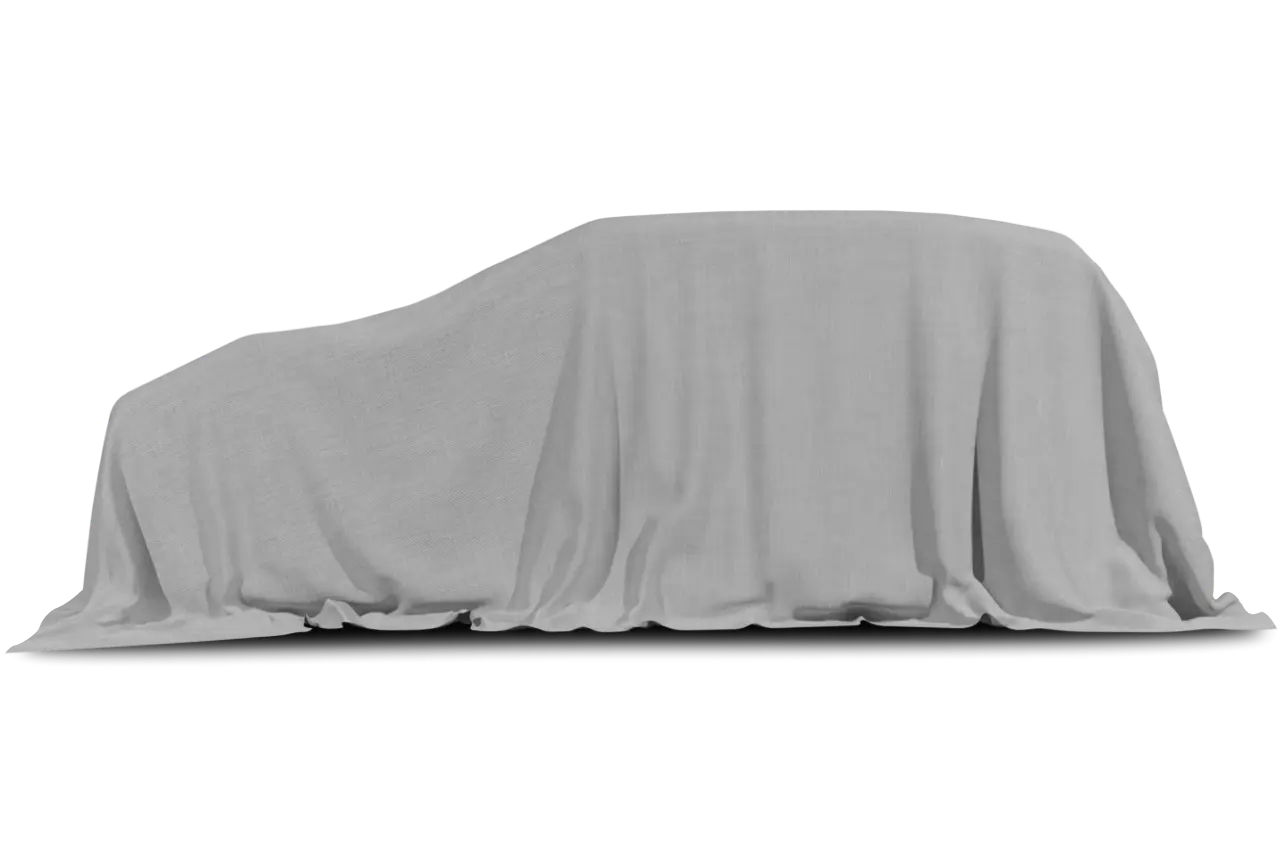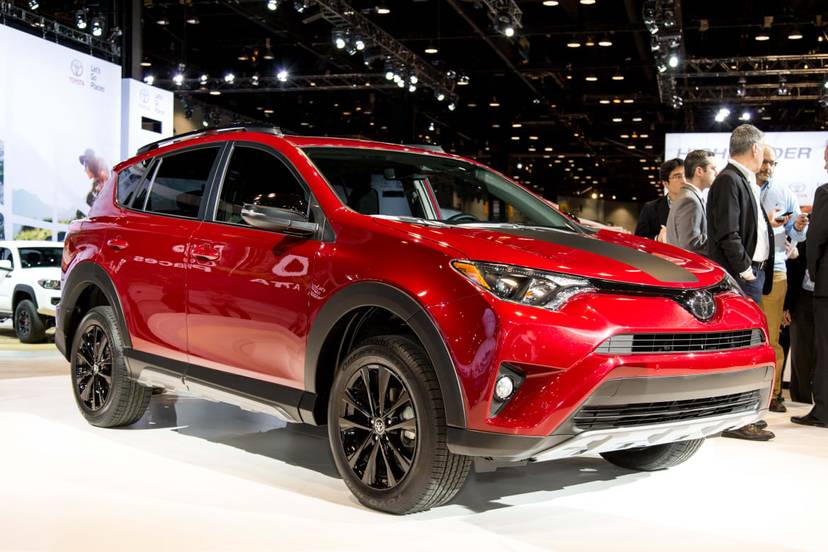
Editor’s note: This review was written in December 2012 about the 2013 Toyota RAV4. Little of substance has changed with this year’s model. To see what’s new for 2014, click here, or check out a side-by-side comparison of the two model years.
Small families looking for efficient, versatile vehicles are flocking to the compact crossover class, where automakers are keeping it fresh and competitive with frequent redesigns and new models.
After six years with minimal changes, the 2013 Toyota RAV4’s redesign is an awkward dance of two steps forward, one step back.
The updates are big: The RAV4 loses its available V-6 and third row of seats, upgrades to a six-speed automatic transmission and swaps its swing-gate cargo door for a more conventional roof-hinged liftgate. The RAV4 is an improvement over the previous version, but only by a baby step. The smoother ride and greater fuel efficiency are leaps ahead, but cuts to the second row and cargo area set it back. The RAV4 is up against several comfortable, refined, efficient compact crossovers, including the jack-of-all-trades Honda CR-V, the mileage king Mazda CX-5 and the popular Ford Escape.
Styling: Toyota Stew
The new RAV4 is about an inch shorter from bumper to bumper than its predecessor, but it seems like it’s shrunk even more because the spare tire has been relocated from the rear to under the floor. Its front end also got an extreme makeover — attitude style.
Toyota says the RAV4’s new look is emotional, aggressive and easily recognizable. I agree on all points, especially the last one. Its new tough-guy character is an amalgamation of the Toyota lineup, highlighted by Camry-inspired headlights, a Highlander-like integrated spoiler, and a grille and front bumper that share similarities with the Sienna minivan.
On the way to the press preview, my cab driver told me he’d never buy a current-gen RAV4 because of its “feminine” styling. Not anymore. Chrome-accented upper and lower grilles combine with wraparound, imposing plastic fangs for a more aggressive appearance. The overall look isn’t as dynamic as the CX-5’s, but it will probably be better received by shoppers than the chunky, angular CR-V.
A Focus on Efficiency
Toyota thinks few people will miss the energetic V-6 — especially because only around 15 percent of RAV4s were so equipped — but customers who did want it will have a tough time acclimating to the four-cylinder, which is the sole engine for 2013. Though it’s not quick, power from the carryover 176-horsepower, 2.5-liter engine is adequate with front- and all-wheel drive, and it builds steadily thanks to a responsive six-speed automatic transmission that replaces last year’s outdated four-speed.
Two new driver-selectable modes alter accelerator response, transmission timing and steering feel — one to benefit fuel economy, the other to enhance performance.
The first, Eco mode, should be called conservation mode. When activated, it feels like you’re bucking a sudden headwind. Throttle response is dulled, and output from the climate system is limited to conserve fuel. It’s most noticeable in stop-and-go traffic, where takeoffs are markedly slower.
On paper, the modest power is worth it, as fuel-economy ratings are up for 2013: Two-wheel-drive models are EPA rated at 24/31 mpg city/highway, a boost of 2 city mpg and 3 highway mpg. City mileage is 1 mpg better than the CR-V (23/31), but the RAV4 still trails the impressively efficient base CX-5 (26/35).
Sport mode takes the opposite tack: A boost of power kicks in immediately and the transmission snaps off quicker shifts. The system also dials back the electric power-steering assist for a more connected-to-the-road feel. Sport mode makes the RAV4 feel more engaging to drive overall.
I drove the 2013 back-to-back with the four-cylinder 2012, and while power feels similar, the ride is definitely improved — smoother with better road isolation. Jump up from the standard 17-inch wheels to the Limited trim’s 18s, however, and you’ll feel and hear much more road than you want to: The ride becomes noticeably harsher, and tire noise is also a problem.
Toyota says a new acoustic windshield makes for a quieter cabin, and I agree for the most part. Wind noise is well-checked, but road noise is hard to ignore. The engine also contributes: It can sound loud and coarse, especially when pushed.
Materials & Controls
The old RAV4’s interior was nice but nothing special, and the new one toes the same line. It isn’t a huge leap ahead in terms of materials; there’s still hard plastic throughout, including the door armrests on all but the top Limited trim level. A new protruding dash panel and the center console armrest are the lone areas of cushiness.
The interior gets points for layout and design, however, with a more modern, handsome look. A color-blocked, two-tone theme is attractive across all trim levels, as are houndstooth-patterned plastic trim pieces. Midline XLEs get bolstered sport seats, and uplevel Limited versions get imitation leather seats and classy-looking French stitching on the dash. For 2013, Toyota’s Softex imitation leather replaces last year’s real stuff.
The previous gen’s climate buttons have been replaced by large, clear dials that are a bit closer to the driver for easier control. A long vent high on the dash is also new to the setup, and Toyota says it helps heat and cool the backseat quickly.
The multimedia interface should look familiar, as it’s similar to the old optional unit. All RAV4s now come with a 6.1-inch touch-screen radio and a backup camera; Bluetooth is again standard. Optional on XLEs and Limiteds are navigation and Toyota’s Entune multimedia system. On the Apps menu, I tested the Pandora internet radio interface and found it intuitive. Same goes for the regular radio controls. Most functions are controlled through the touch-screen, but there’s also traditional knobs for volume and station tuning.
The optional navigation system was easy to use, though it’s not in the most logical menu. Rather than a button that says “Nav,” the maps and directions are in the “App” menu. The screen size is fine for most radio functions, but when reading the map it seems small.
Passenger & Cargo Room
Four average-sized adults won’t have a problem getting comfortable in the RAV4. The backseat is predictably firmer and flatter than the front seats, but it’s not uncomfortable … unless you’re in the middle seat, which is too narrow for an adult.
By the numbers, front and rear headroom and legroom are mid-pack. Out of the four, the Escape (with 43.1 inches) offers the most front legroom when compared with the RAV4’s 42.6. The Mazda CX-5 handily beats it and the others when it comes to second-row legroom, however, with 39.3 inches compared with the RAV4’s 37.2 inches.
However, there are a couple things missing from the back half of the cabin. The old RAV4’s second row reclined and slid forward and back to benefit cargo or passenger room. The new one only reclines. The old model also had two release levers in the cargo area to send the seats down with one pull; these are also gone. The seats still fold fairly easily in a 60/40 split, but the seat-mounted levers are less handy. The CR-V and CX-5 have the one-pull handle setup.
The optional third-row seat also pulled a disappearing act; Toyota said only 5 percent of buyers went for the option. Yes, it was comically cramped back there, but the availability of in-a-pinch extra seating made the crossover more versatile.
With 73.4 cubic feet of maximum cargo space, the new RAV4 offers more than the old one, but barely. (The outgoing model had 73 cubic feet with the seats folded.) Either way, it’s still more than the CR-V (70.9), Escape (67.8) and CX-5 (65.4). With the seats up, the RAV4 wins again with a couple more cubic feet of luggage space than the others.
The cargo area is also nice and tall, with a comfortably low lift-in height, and Toyota ditched the side-hinged gate for a conventional liftgate. The spare tire had to go somewhere, though: it’s now in what used to be a vast under-floor cargo compartment.
Features & Price
For 2013, the RAV4 is available in LE, XLE and Limited trims with front- or all-wheel drive. Two-wheel drive LEs start at $24,145 (all prices include destination charges); all-wheel drive adds $1,400 across the lineup. The CR-V and Escape start slightly less at $23,625 and $23,295, respectively. The Mazda CX-5 is the value leader, however, with a base price of $21,790, though an automatic transmission is an additional $1,400.
Base versions of the RAV4 are well-equipped, with new standards like the backup camera and steering-wheel audio controls. The Honda CR-V lists them standard as well; a camera is optional on the Escape and standard only on uplevel versions of the CX-5.
Two small Toyota cheap-outs bug me: A cargo cover is standard only on XLEs and Limiteds, and handy extendable sun visors for the driver and passenger are standard only on the Limited. New standard features on Limited versions include a height-programmable power liftgate, push-button start and heated seats up front.
Safety
The 2013 RAV4 has not yet been crash-tested by the National Highway Traffic Safety Administration or the Insurance Institute for Highway Safety.
Eight airbags are standard, including a new driver’s knee airbag and a front-passenger seat cushion airbag. Also newly standard on all models is a backup camera. Two new safety systems — blind spot monitoring and rear cross-traffic alert — are optional on Limited trims. These welcome features are rare in this class. Click here for a full list of equipment.
Flip-down backseat head restraints keep your view clear when backing up; large side mirrors also help decrease blind spots.
In the Market
There’s no doubt that the new RAV4 will be popular; it’s skating on strong momentum. Even though it hasn’t been updated in years, the old one is still one of the top sellers in the compact crossover class. According to Toyota, more than 1.7 million have been sold since the car’s introduction in 1995, and 80 percent of them are still on the road today. But will the new one find as much favor?
The 2013 RAV4 is good, but so was the last generation — and in some ways that one was better. In the win column for 2013 are a more efficient powertrain and a more comfortable ride. But consumers are also being offered less this year: Narrower powertrain and seating-capacity options mean shoppers are being given fewer choices in a less versatile vehicle.
Additional standard features should increase its appeal, but in a class filled with overachievers, the 2013 RAV4 may come up a few steps short.





































.png)


